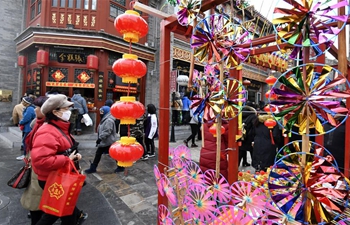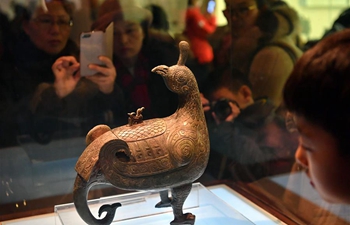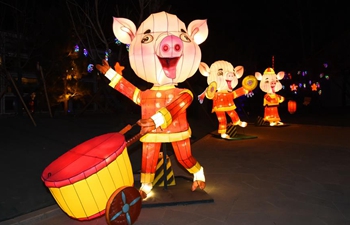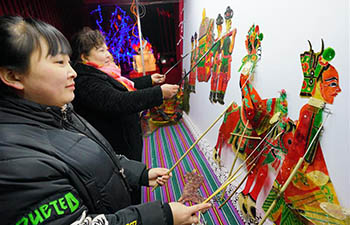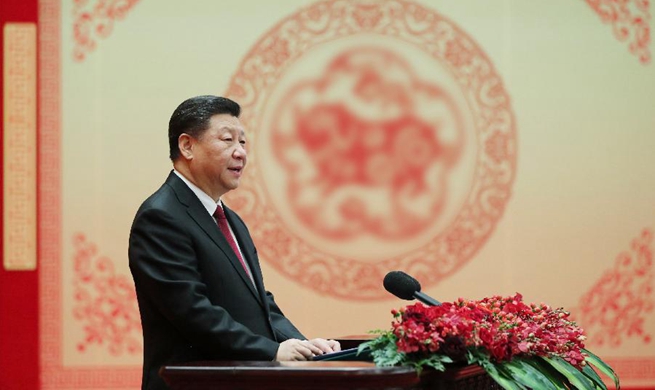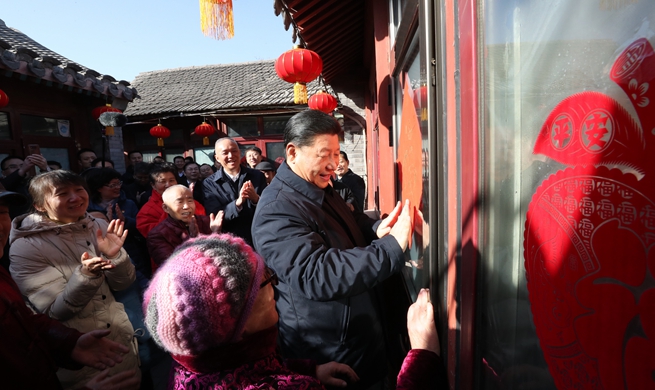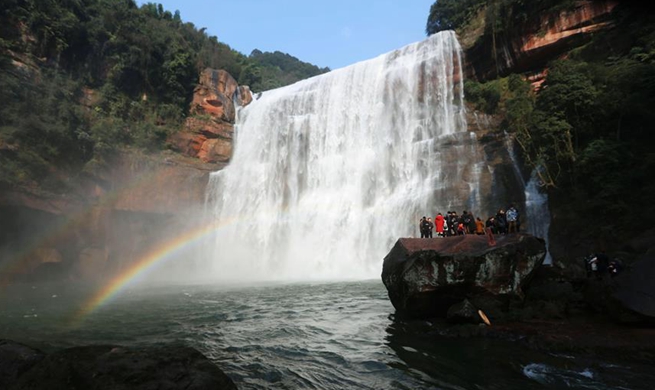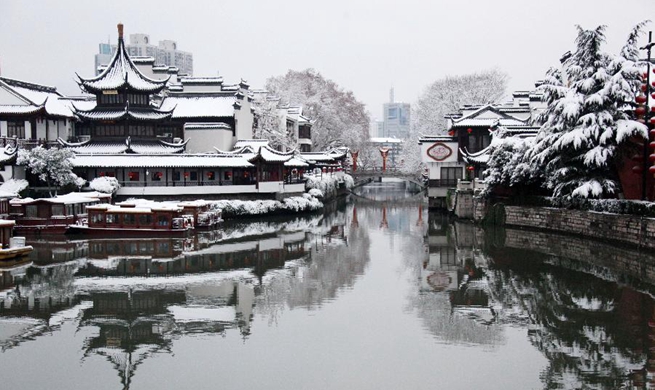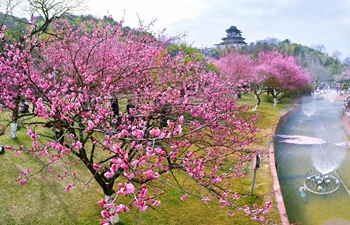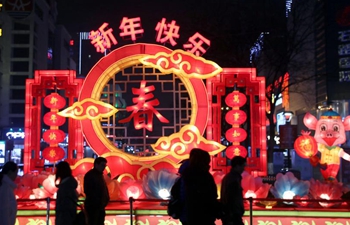URUMQI, Feb. 8 (Xinhua) -- Chinese archaeologists said they have discovered the largest ancient turquoise mining site so far in northwest China's Xinjiang Uygur Autonomous Region.
The Heishanling turquoise mining relic site, which covers an area of 8 sq km, is in an uninhabited area at the junction of Yizhou District, Hami City and Ruoqiang County in the Mongolian Autonomous Prefecture of Bayingolin in eastern Xinjiang.
More than 1,200 turquoise items have been unearthed in the area during the excavation work from September to November last year, according to the Xinjiang Cultural Relics and Archaeology Institute.
Archaeologists found the relic site was comprised of separate function zones for processing of tools, mining, mineral separation and living. A large amount of pottery and bronze items, stone and bone implements, textile and animal skin product relics were excavated.
The relic site, also close to the ancient Silk Road route, was discovered in 1981. Its first archaeological survey began in 2016. Archaeologists from the regional archaeology institute, Northwest University in Xi'an City, Shaanxi Province and Beijing Science and Technology University, participated in the excavation work.
Based on the dating studies of the relic items, archaeologists believe mining activity took place here between the Spring and Autumn Period (770-476 B.C) and the Warring States period (475-221 B.C.).
The discovery of the turquoise mining relic cluster gave clues to the ancient industrial exchange between Xinjiang and other parts of China, said Xian Yiheng from Northwest University.
The mining and living relics showcased the ancient industrial process and enriched the sources of China's turquoise production, he added.
The excavation of the mining relic will continue this year.




